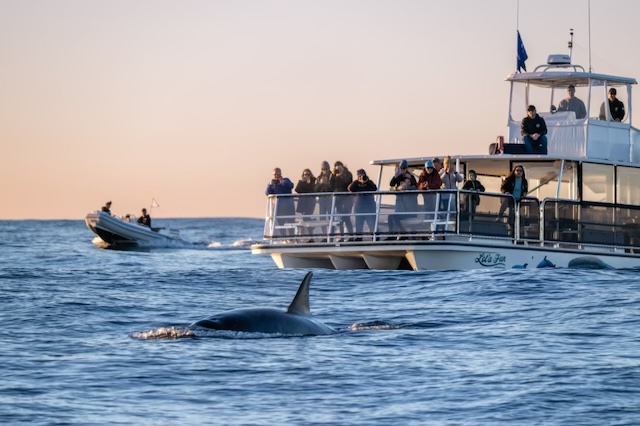What locations have the highest whale populations?

What locations have the highest whale populations?
Whale watching is an awe-inspiring experience that connects us with the majestic creatures of the ocean. Understanding where to find the highest whale populations can significantly enhance your whale-watching adventure. In this article, we will look at the best places in the world for seeing whales. We will focus on why these areas are great for whale lovers.
Dana Point: A Premier Whale-Watching Destination

Located in Southern California, Dana Point is renowned for its exceptional whale-watching opportunities. Dubbed the “Whale Capital of the West,” Dana Point offers a unique vantage point for observing various whale species. The rich marine environment and coastal geography make it a hotspot for whale populations, especially during migration seasons.
Why Dana Point?
Dana Point is ideally situated along the migratory paths of gray whales, blue whales, and humpback whales. The nutrient-rich waters attract these magnificent creatures, making it a prime location for whale watching. Additionally, the calm seas and clear visibility offer an ideal setting for capturing these moments.
Dana Wharf Whale Watching

Dana Wharf Whale Watching is one of the premier operators in Dana Point, offering guided tours and educational experiences. With experienced naturalists on board, these tours provide insights into whale behaviors and conservation efforts. Whether you’re a seasoned whale watcher or a first-timer, Dana Wharf ensures a memorable experience.
Other Whale Population Hotspots
Dana Point is a great place for whale watching. However, many other areas around the world also have many whales. Each of these locations offers unique opportunities to witness diverse whale species.
Monterey Bay, California
Monterey Bay is another top destination for whale enthusiasts. Known for its deep underwater canyon, the bay supports a diverse marine ecosystem. This abundance of marine life attracts blue whales, orcas, and humpback whales, particularly during the summer months.
Hervey Bay, Australia
Hervey Bay in Queensland, Australia, is famous for its humpback whale population. Each year, from July to November, thousands of humpback whales migrate to these warm waters to breed and nurse their calves. The sheltered bay provides a safe haven for these gentle giants, making it a prime location for whale watching.
Reykjavik, Iceland
Iceland’s capital, Reykjavik, is a great place to see minke whales, humpback whales, and even blue whales. The cold, nutrient-rich waters around Iceland are a favorite feeding ground for these species. Whale watching tours operate year-round, with peak viewing times in the summer months.
San Juan Islands, Washington
The San Juan Islands in Washington State are known for their resident orca population. These majestic creatures can be seen throughout the year, with the best viewing times between May and October. The islands have a clean environment and lots of marine life. This makes it a great place to see orcas in the wild.
Kaikoura, New Zealand
Kaikoura, on the east coast of New Zealand’s South Island, is famous for its sperm whale population. The deep waters off the coast provide an ideal habitat for these massive creatures. Whale watching tours in Kaikoura offer the chance to see sperm whales year-round, along with dolphins and other marine life.
Plettenberg Bay, South Africa
Plettenberg Bay, South Africa, is a top whale-watching spot along the Garden Route, known for its rich marine life. Its calm, nutrient-rich waters attract southern right, humpback, and Bryde’s whales, especially during breeding season (June–November). Visitors love its stunning coastal views and up-close whale encounters from Robberg Nature Reserve and boat tours.
Factors Contributing to Whale Population Hotspots
Understanding why certain locations have high whale populations involves examining various environmental and ecological factors. These factors include:
Nutrient-Rich Waters
Many whale population hotspots are characterized by nutrient-rich waters. Upwellings, where deep ocean currents bring nutrients to the surface, create an ideal feeding ground for whales. These nutrients help krill and other small sea creatures grow. They are the main food for many whale species.
Migration Routes
Whales often travel long distances during their migrations, moving between feeding and breeding grounds. Places like Dana Point and Monterey Bay see many whales during certain times of the year.
Safe Breeding Grounds
Whales seek safe, sheltered areas to breed and raise their young. Bays and coastal regions with calm waters provide an ideal environment for this purpose. Hervey Bay and the San Juan Islands are prime examples of such breeding grounds.
The Importance of Conservation
As we enjoy the beauty of whale watching, it’s crucial to remember the importance of conservation efforts. Whales face numerous threats, including climate change, pollution, and ship strikes. Supporting responsible whale watching practices and conservation initiatives helps protect these incredible creatures for future generations.
How You Can Help
- Support conservation organizations: Donate to or volunteer with groups dedicated to marine conservation and whale protection.
- Choose responsible tour operators. Pick whale watching tours that care for the whales. Make sure they follow guidelines to keep disturbances low.
- Reduce plastic use: Minimize your plastic consumption to help reduce ocean pollution, which poses a threat to marine life.
Conclusion
Whale watching is an amazing experience. It lets you see the lives of some of the ocean’s most beautiful animals. You can see whales in their natural homes. Visit popular places like Dana Point, Monterey Bay, and Hervey Bay. Remember, our actions can greatly affect the survival of these species. Let’s work together to protect and appreciate these amazing marine giants.
